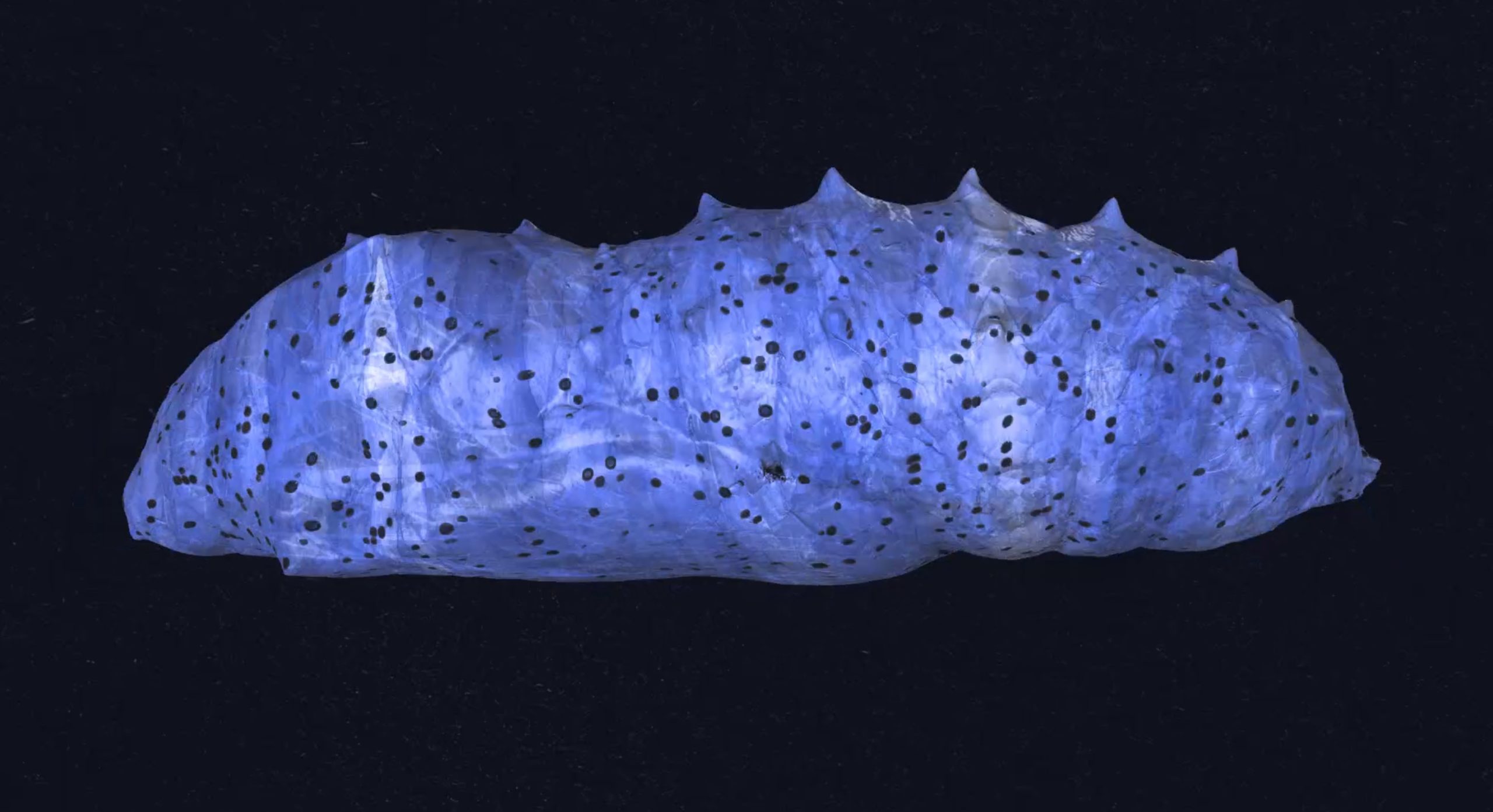Yasemin Saplakoglu in Quanta:
 On warm summer nights, green lacewings flutter around bright lanterns in backyards and at campsites. The insects, with their veil-like wings, are easily distracted from their natural preoccupation with sipping on flower nectar, avoiding predatory bats and reproducing. Small clutches of the eggs they lay hang from long stalks on the underside of leaves and sway like fairy lights in the wind.
On warm summer nights, green lacewings flutter around bright lanterns in backyards and at campsites. The insects, with their veil-like wings, are easily distracted from their natural preoccupation with sipping on flower nectar, avoiding predatory bats and reproducing. Small clutches of the eggs they lay hang from long stalks on the underside of leaves and sway like fairy lights in the wind.
The dangling ensembles of eggs are beautiful but also practical: They keep the hatching larvae from immediately eating their unhatched siblings. With sickle-like jaws that pierce their prey and suck them dry, lacewing larvae are “vicious,” said James Truman, a professor emeritus of development, cell and molecular biology at the University of Washington. “It’s like ‘Beauty and the Beast’ in one animal.”
This Jekyll-and-Hyde dichotomy is made possible by metamorphosis, the phenomenon best known for transforming caterpillars into butterflies. In its most extreme version, complete metamorphosis, the juvenile and adult forms look and act like totally different species.
More here.
